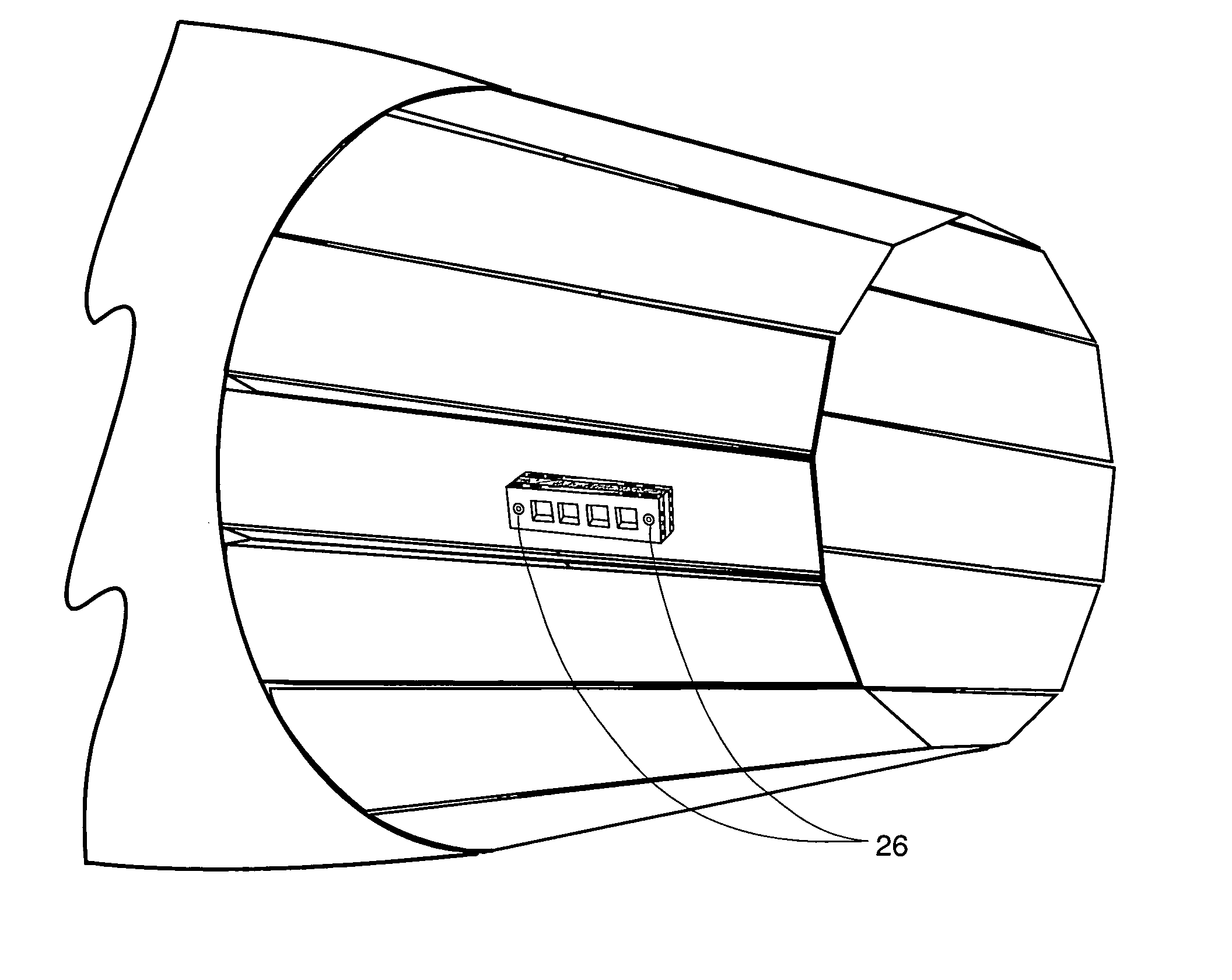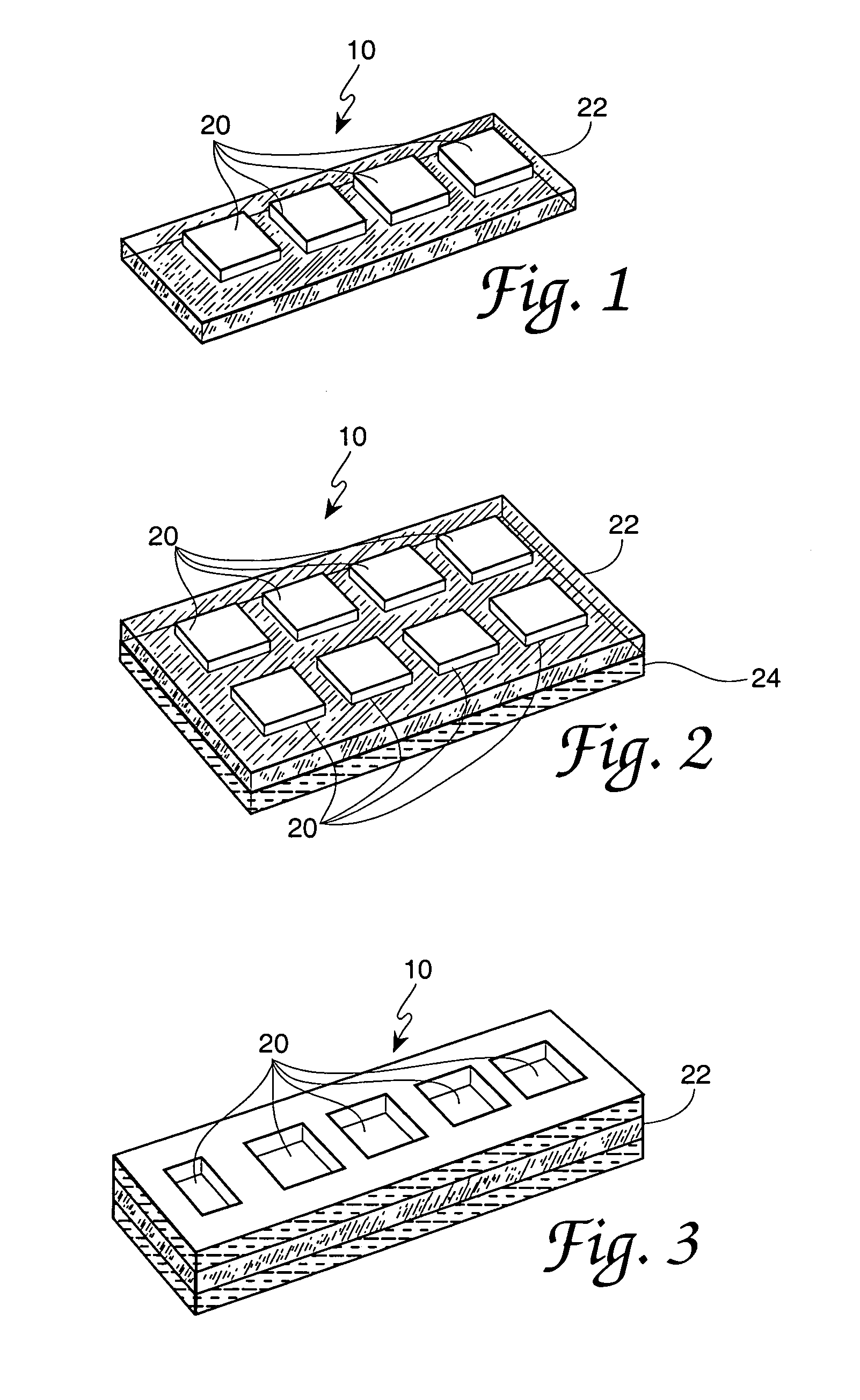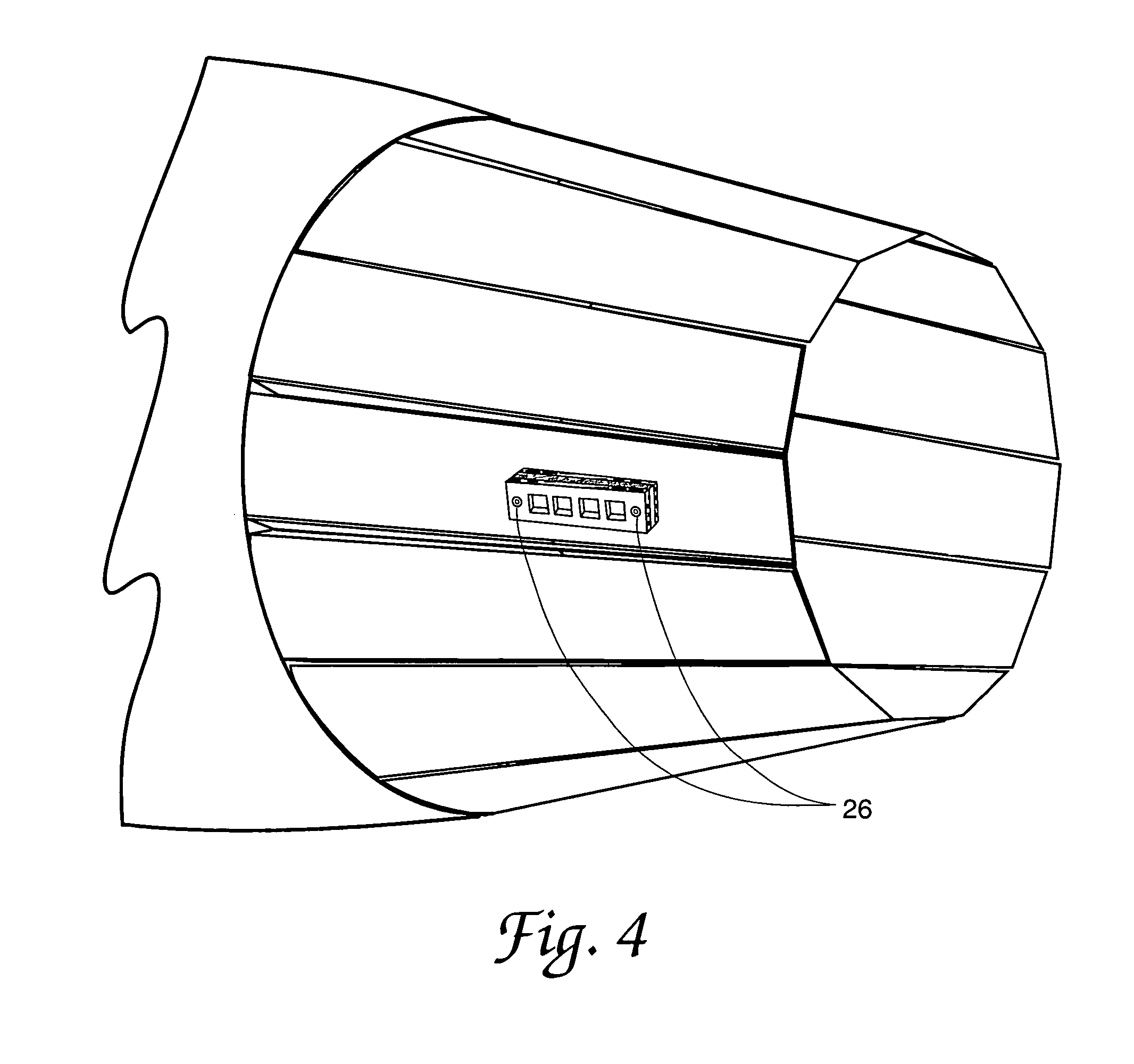Thermal history sensor
a technology of thermodynamics and sensors, applied in the field of thermodynamic effects on materials, can solve the problems of material components exposed, various periods of time suffer mechanical properties degradation, and component failur
- Summary
- Abstract
- Description
- Claims
- Application Information
AI Technical Summary
Benefits of technology
Problems solved by technology
Method used
Image
Examples
Embodiment Construction
[0027]Referring to the drawings, FIG. 1 depicts one embodiment of the sensor 10 having four different glass ceramic substrates 20 secured to a reflective surface 22. In this particular embodiment, glass ceramic substrates 20 are equally sized and spaced and are positioned linearly (single row array) within the same plane. An alternative embodiment of sensor 10, in which glass ceramic substrates 20 are arranged in a two-dimensional array, is illustrated in FIG. 2. In one embodiment, all glass ceramic substrates 20 have the same dimensions—as well as the same average height and width (i.e., substantially square), though this is not essential. In one embodiment, glass ceramic substrates 20 measure approximately 1 cm square. In other embodiments, glass ceramic substrates 20 are considerably smaller.
[0028]The sensor 10 includes at least two glass ceramic substrates 20 having different compositions. In one embodiment, no two glass ceramic substrates 20 of sensor 10 have the same material ...
PUM
| Property | Measurement | Unit |
|---|---|---|
| Temperature | aaaaa | aaaaa |
| Angle | aaaaa | aaaaa |
| Composition | aaaaa | aaaaa |
Abstract
Description
Claims
Application Information
 Login to View More
Login to View More - R&D
- Intellectual Property
- Life Sciences
- Materials
- Tech Scout
- Unparalleled Data Quality
- Higher Quality Content
- 60% Fewer Hallucinations
Browse by: Latest US Patents, China's latest patents, Technical Efficacy Thesaurus, Application Domain, Technology Topic, Popular Technical Reports.
© 2025 PatSnap. All rights reserved.Legal|Privacy policy|Modern Slavery Act Transparency Statement|Sitemap|About US| Contact US: help@patsnap.com



